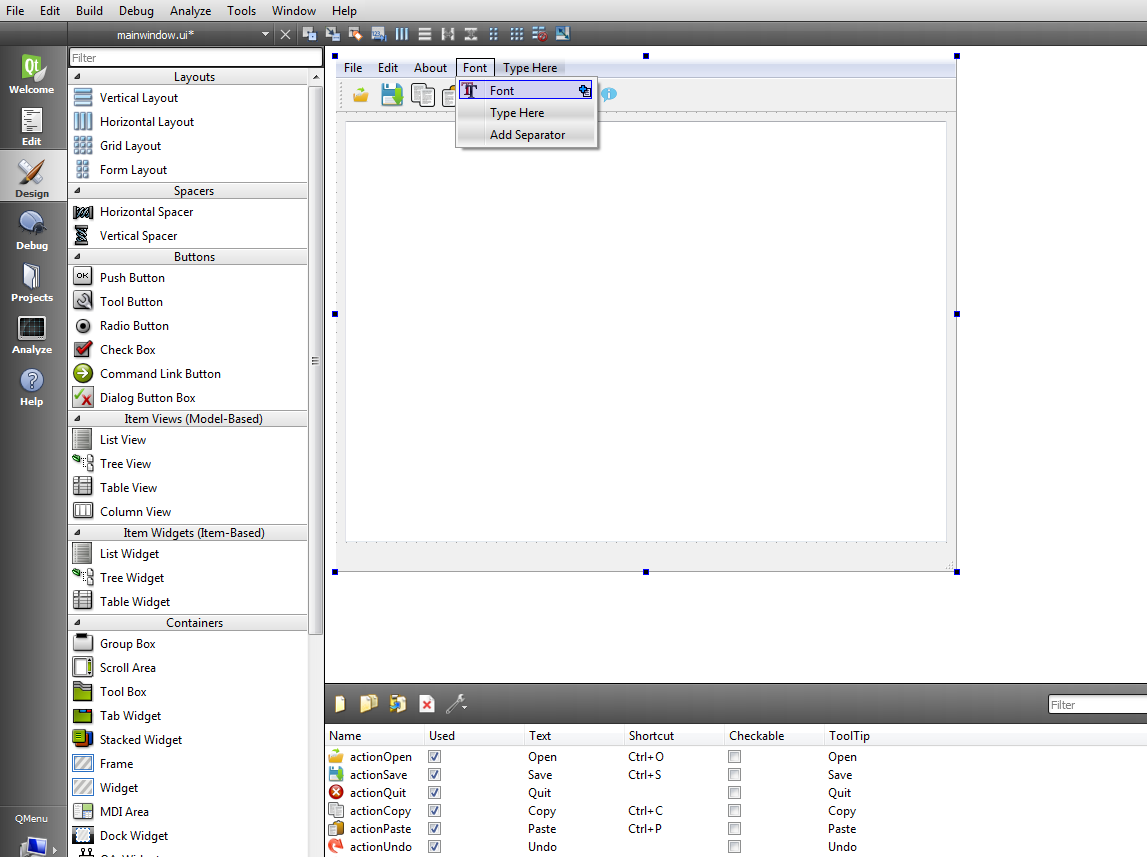Traditional syntax: SIGNAL and SLOT QtCore.SIGNAL and QtCore.SLOT macros allow Python to interface with Qt signal and slot delivery mechanisms. This is the old way of using signals and slots. The example below uses the well known clicked signal from a QPushButton.The connect method has a non python-friendly syntax.
last modified July 16, 2020

- This video introduces signals and slots so that we can now respond to events. It also wraps up our window in a class. Here is the code for the tutorial: http.
- Qt uses a specific slot keyword to identify slots. Since a slot is a function, you can always adjust the visibility (public, protected or private) depending on your needs. Add this slot implementation in the MainWindow.cpp file.
- Checkable list in Qt with QListWidget or QListView. This article shows how to create a checkable list in Qt. The application simultaneously highlights the checked items and saves the checked items into a file.
In this part of the Qt5 C++ programming tutorial we talk about events and signals.
Events are an important part in any GUI program. All GUI applications are event-driven. An application reacts to different event types which are generated during its life. Events are generated mainly by the user of an application. But they can be generated by other means as well, e.g. Internet connection, window manager, or a timer. In the event model, there are three participants:
- event source
- event object
- event target
The event source is the object whose state changes. It generates Events. The event object (Event) encapsulates the state changes in the event source.The event target is the object that wants to be notified. Event source object delegates the task of handling an event to the event target.
When we call the application's exec() method, the applicationenters the main loop. The main loop fetches events and sends them to the objects. Qt has a unique signal and slot mechanism. This signal and slot mechanism is an extension to the C++ programming language.
Signals and slots are used for communication between objects. A signal is emitted when a particular event occurs. A slot is a normal C++ method;it is called when a signal connected to it is emitted.
Click
The first example shows a very simple event handling example. We have one push button. By clicking on the push button, we terminate the application.
This is the header file.
We display a QPushButton on the window.
The connect() method connects a signal to the slot. When we click on the Quit button, the clicked signal is generated. The qApp is a global pointer to the application object. It is defined in the <QApplication> header file. The quit() method is called when the clicked signal is emitted.
This is the main file.
KeyPress

In the following example, we react to a key press.
This is the keypress.h header file.
The application terminates if we press the Escape key.
One of the ways of working with events in Qt5 is to reimplement an event handler. The QKeyEvent is an event object, which holds information about what has happened. In our case, we use the event object to determine which key was actually pressed.
This is the main file.
QMoveEvent
The QMoveEvent class contains event parameters for move events.Move events are sent to widgets that have been moved.
This is the move.h header file.
In our code programming example, we react to a move event. We determine the current x, y coordinates of the upper left corner of the client area of the window and set those values to the title of the window.
We use the QMoveEvent object to determine the x, y values.
We convert the integer values to strings.
The setWindowTitle() method sets the text to the title of the window.
This is the main file.
Qt5 Public Slots Online
Disconnecting a signal
A signal can be disconnected from the slot. The next example shows how we can accomplish this.
In the header file, we have declared two slots. The slots is not a C++ keyword, it is a Qt5 extension. These extensions are handled by the preprocessor, before the code is compiled. When we use signals and slots in our classes, we must provide a Q_OBJECT macro at the beginning of the class definition. Otherwise, the preprocessor would complain.
In our example, we have a button and a check box. The check box connects and disconnects a slot from the buttons clicked signal. This example must be executed from the command line.
Here we connect signals to our user defined slots.
Qt5 Public Slots Games
If we click on the Click button, we send the 'Button clicked' text to the terminal window.
Inside the onCheck() slot, we connect or disconnect the onClick() slot from the Click button, depending on the received state.
This is the main file.
Timer
A timer is used to implement single shot or repetitive tasks. A good example where we use a timer is a clock; each second we must update our label displaying the current time.
This is the header file.
In our example, we display a current local time on the window.
To display a time, we use a label widget.
Qt Public Slots
Here we determine the current local time. We set it to the label widget.
We start the timer. Every 1000 ms a timer event is generated.
To work with timer events, we must reimplement the timerEvent() method.
This is the main file.
Qt5 Public Slots Game
This chapter was dedicated to events and signals in Qt5.
